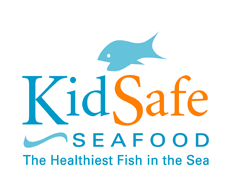 |
|
 |
|
Health Benefits for Kids: Omega-3s & more
Low in saturated fat, seafood provides vitamins and minerals, including iron, zinc, vitamins A, B, and D; and protein. The omega-3 fatty acids found in fish are considered beneficial for cardiovascular health and preliminary research suggests they can enhance brain development and improve learning, behavior and vision.
A balanced diet is essential for proper nutrition. Balancing intake of omega-6 fatty acids with omega-3 fatty acids is no exception. Omega-6 fatty acids are very important for the body as well, but when consumed in high doses they can cause health problems such as inflammation of blood vessels. For a detailed nutritional analysis of the foods you eat, we recommend using the U.S. FDA's Nutrient Database or Nutrition Data.
Fish have varying levels of omega-3s. Fatty fish, like Wild Alaskan Salmon, contain the highest amount of omega-3s. Seaweed and eggs from chickens fed flaxseed, algae, and fresh green grass have high omega-3 content as well.
Flaxseed, walnuts, and leafy greens like kale also provide omega-3s. These omega-3s, called ALA, are different from those present in seafood, referred to as DHA and EPA, and are also vital to good health. ALA can be converted by the body to DHA and EPA, but the conversion rate is not very high. A vegetable source of EPA is wakame, a seaweed used in Japanese cooking.
Fish oil pills are also good sources of omega-3s but can contain contaminants. Most companies that manufacture fish oil pills use purification processes such as distillation and steam deodorizations to remove contaminants, but parents should consult with their doctors before giving children fish oil supplements. Considering the source of the fish oil is also important, as capturing wild fish to produce fish oil may have detrimental impacts on fish populations. Environmental Defense Fund provides rankings of available fish oils based on purification methods, but does not evaluate the sustainability of the fisheries that they come from.
An alternative is to get DHA straight from the source—algae. Several companies produce supplements that contain these omega-3s from algal sources. The algae are grown in controlled conditions and are very unlikely to contain toxic contaminants. These algal versions are great for vegetarians.
Exactly how much fish children should be eating is currently the topic of much debate. The USDA’s food pyramid advises that children get their protein from a variety of sources—lean meat, poultry, fish, beans, nuts, peas, and seeds; and essential oils from fish, nuts and some vegetable oils. The American Heart Association is more specific, recommending two servings (2-3 ounces) of fish a week for children as an early prevention of cardiovascular disease.
Physicians for Social Responsibility and Association for Reproductive Health Professionals stresses the importance of eating a variety of fish in its joint report to the medical community: “To reduced the risk of high exposure to pollutants from over-consumption of any one fish, parents should be advised to teach children from an early age to enjoy a variety of low mercury, low PCB fish and shellfish.”
Home - Site Map - Privacy Policy - Donate - SeaWeb - Contact Us
© 2011 KidSafe Seafood